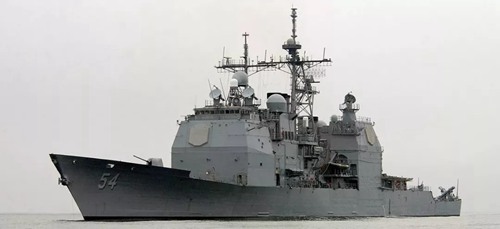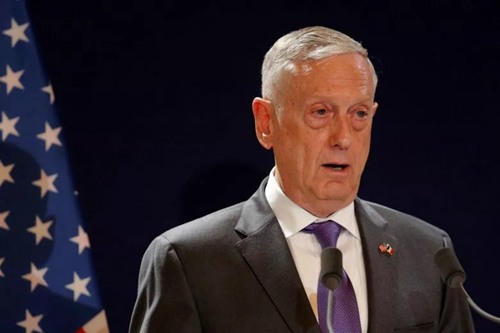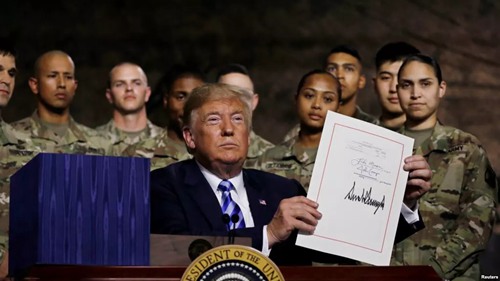25
OctReuters reported that according to the statement released by US navy and Taiwan’s “ministry of defense” on October 22, two US navy warships sailed through Taiwan Strait. It was the second time this year after US navy conducted a similar operation in July.
Given the heightened China-U.S. tensions, the public are more inclined to speculate this operation as a signal that Taiwan might become the next tipping point. Although no one wishes the current Sino-American relations going down to this moment, U.S. navy sailing through Taiwan Strait clearly shows the opposite. Why the United States keeps playing the Taiwan card?

Zuo Xiying, research fellow of National Academy of Development and Strategy, Renmin University of China, explained that there are two factors driving behind this: one is Trump administration reevaluated US policy on Taiwan, another is the current China-U.S. trade war.
“When Trump came to power, the new administration reevaluated its Taiwan policy, concluding that America must adjust its strategic policy on Taiwan in light of the serious imbalance of power between Taiwan and the mainland. The basic rationale behind all these actions from having a call with Tsai Ing-wen to arms sale to Taiwan Travel Act is the United States wants to rebuild Beijing-Washington-Taipei trilateral ties, turning up the pressure on China mainland and supporting Taiwan politically and militarily,’ said Zuo Xiying.
Zuo noted that America is taking various measures such as warships sailing through Taiwan Strait, US navy research vessel docked in Taiwan to provoke China mainland. By playing the Taiwan card time and again, America aims to put more comprehensive pressure on China and hints an overall shift of American China policy.
Since May, 2016, cross-strait relations have been going south as Tsai Ing-wen refused to recognize the 1992 consensus. However, Washington’s action are sending mixed signals. The US on one hand send warships to Taiwan Strait, while trying to convince Beijing that it still hold to one-China policy on the other. Last week, US Secretary of Defense James Mattis clearly said that during his meeting with Chinese Counterpart in Singapore. And early this month, Vice-president Mike Pence also stressed that America will stick to the one-China policy and Taiwan is a part of Chinese territory.

It seems self-contradictory, but actually is just America’s usual practices. Zuo explained that current US policy on Taiwan are consisted of four aspects. The first is the three Sino-US joint communiques, i.e. the one-China policy. The second is The Taiwan Relations Act, enabling the US to sell defensive weapons to Taiwan and guarantee the safety of Taiwan. The third is the Six Assurances to Taiwan, including such terms as not set a date for termination of arms sales to Taiwan, not alter the terms of the Taiwan Relations Act. The fourth is the recent Taiwan Travel Act, allowing Taiwan-US high-level exchange.
“All these four policies combining together are the whole picture of the US policy toward Taiwan, therefore, what the US has always done is to recognize one-China policy in principle at the same time stick to its usual practices to Taiwan in reality,” said Zuo.
It is not the first time that American interventions leading to a more strained cross-strait relations. In 1990s, then President Clinton sent two aircraft carriers to western pacific region when conflict broken out between Taiwan and Mainland. Now again, American congress passed the Taiwan Travel Act allowing high-level official visits and 2019 Defense Authorization Act, allowing military cooperation.

Zuo stressed that Trump administration is more motivated and serious to play the Taiwan card against the backdrop of China-U.S. trade war. In the future, the cross-strait tensions will be upgraded, and China-US strategic gambling will be fueled in consequence. Taiwan is highly likely to be next tipping point.
The United States playing the Taiwan card can kill two birds with one stone. Tactically, it will pose more pressure on China to concede in trade war. Strategically, it will rebuild so-called “more balanced” regional landscape by supporting Taiwan in military and politics and pressuring China.
“China should state our stance and bottom line on one hand, and keep fighting on the other. Instead of taking emotional and responsive actions to intensify conflicts, China must be wise enough to play rationally and dynamically with the US,” suggested Zuo.
(Zuo Xiying, research fellow of National Academy of Development and Strategy, Renmin University of China.)
Original link: http://column.cankaoxiaoxi.com/2018/1023/2343129_2.shtml